Many wonder whether lavender can survive winter and how to keep it alive. The good news is that it can, and you may not have to do anything to keep it alive, even if you live in a cold climate.
Choosing a cold-hardy lavender plant helps ensure it survives the winter outdoors. English Lavender (L. angustifolia) and lavandins (L. x intermedia) are perfect for climates with cold winters and thrive in USDA Hardiness Zones 5 or warmer.
The lavender types go dormant in the winter, and the leaves change from the green of summertime to a silvery, sage-green color. When this happens, they’re resting, and you’ll see new green leaves when spring arrives.
However, Spanish lavender (L. stoechas) or French lavender (L. dentata) can only survive outside during winter in Hardiness Zones 8 and warmer. If you have these types and don’t live in those zones, you’ll have to move your plants indoors for the winter when the weather gets cold.
Whether you keep your plant inside or outside, the tips below can help your lavender survive winter.
1. Don’t Prune or Cover It
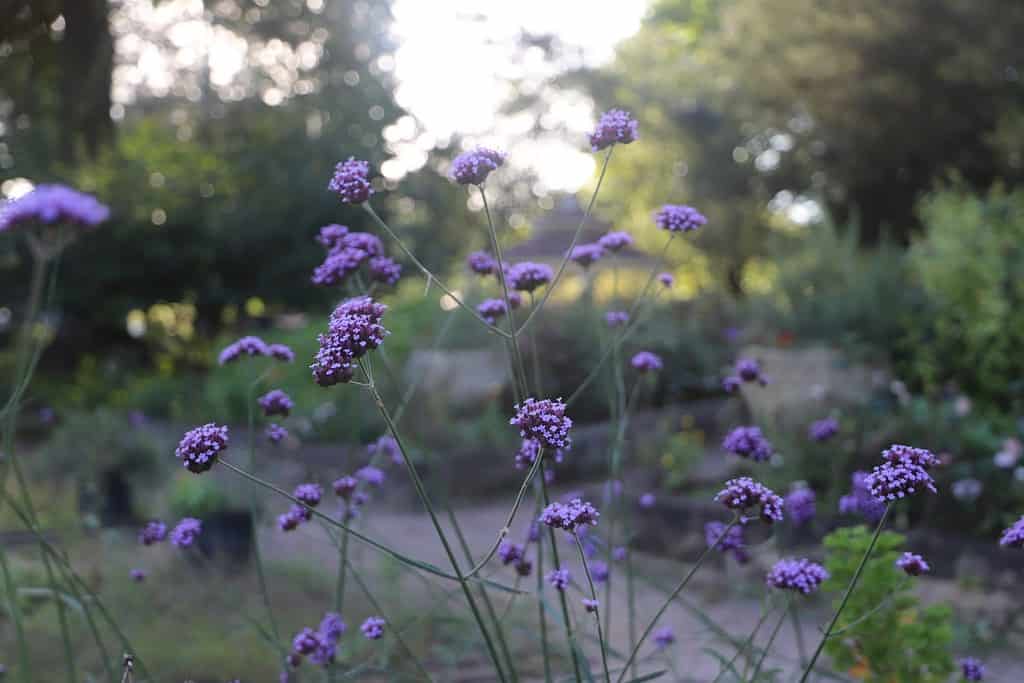
Deadhead your lavender plant before the beginning of August to improve the chance of winter survival.
©Tina Domer/Shutterstock.com
In the winter, you might think it’s best to cover your outdoor plant or prune it since that’s the case with many other plants. However, all you have to do to keep lavender alive is to deadhead them by trimming the flower stalks.
You don’t want to cut the branches off, so be careful not to do too much. Try to do it by the beginning of August so it has time to mature before it gets frostbite.
2. Put Leaves Around the Base

Before the first frost, put leaves or straw around the base of your outdoor lavender plant.
©ESstock/Shutterstock.com
Putting leaves around the base of your outdoor lavender plant is also a good idea to add warmth. Then, you can let the snow pile up without worrying about it. Another option is to add a thin layer of straw for protection.
3. Make Sure They Get Plenty of Light
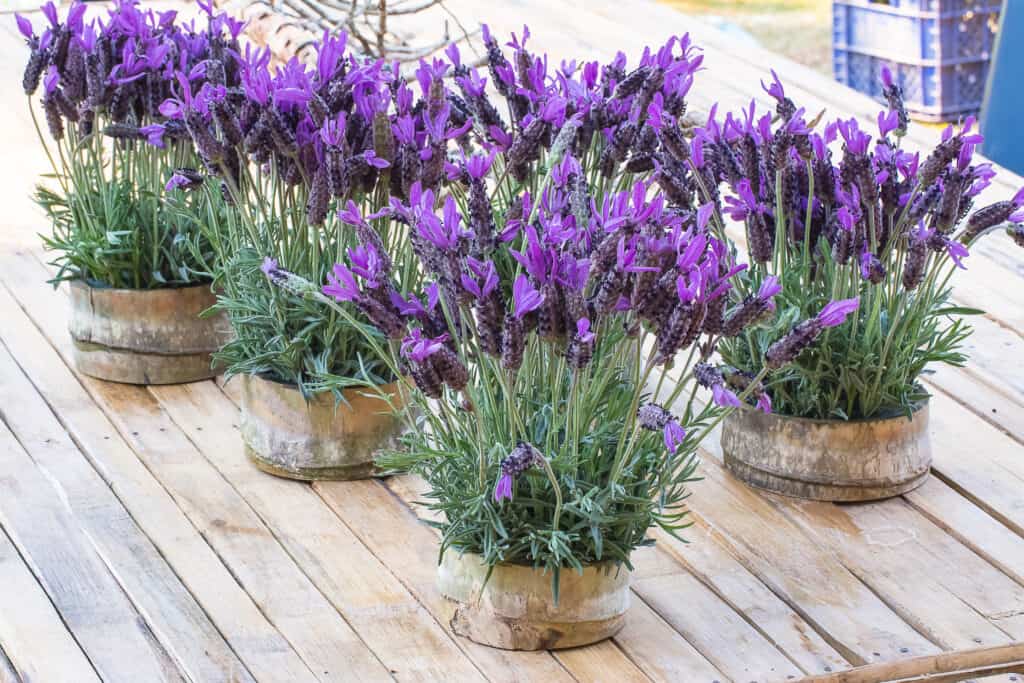
Lavender plants need lots of light, so be mindful of where you place them.
©Shan 16899/Shutterstock.com
Whether your plants are inside or outside, they need plenty of light. If you move your lavender plants indoors, you’ll want to find a sunny spot like a windowsill.
4. Keep Lavender Plants Away from Heater Vents and Drafts
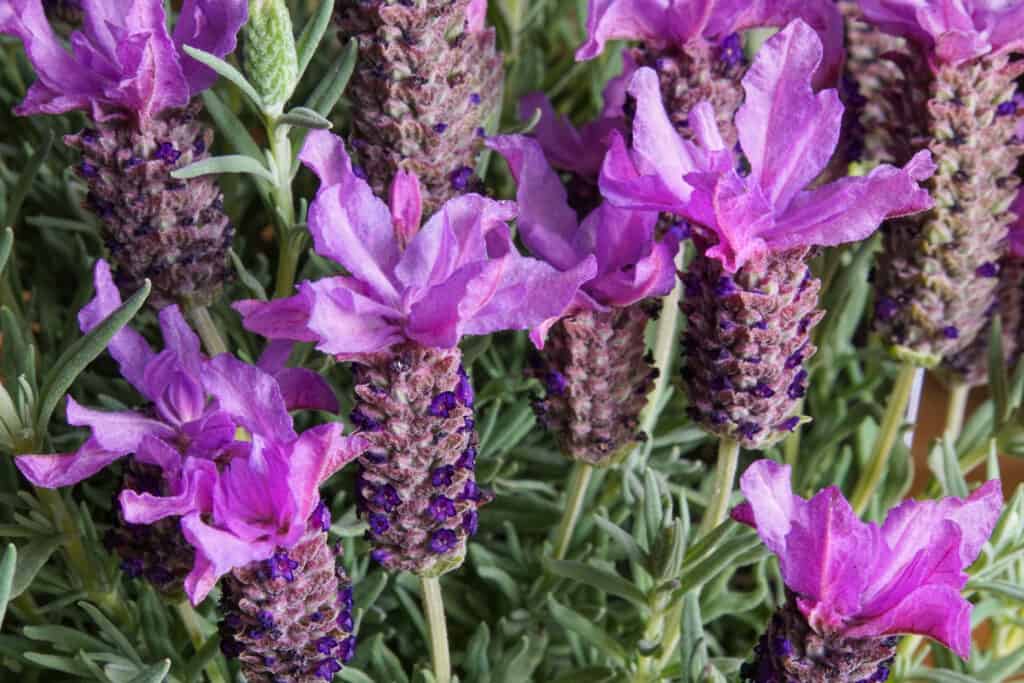
Once you move your lavender plants inside, make sure they aren’t near a heater or in a drafty spot.
©iStock.com/13threephotography
If you put your plants too close to your heater vents, they’ll dry out. On the other hand, a drafty location can cause them to get too cold. If you want your lavender plants to survive indoors, you’ll want to keep them away from heat sources and drafts.
5. Give It the Right Amount of Water
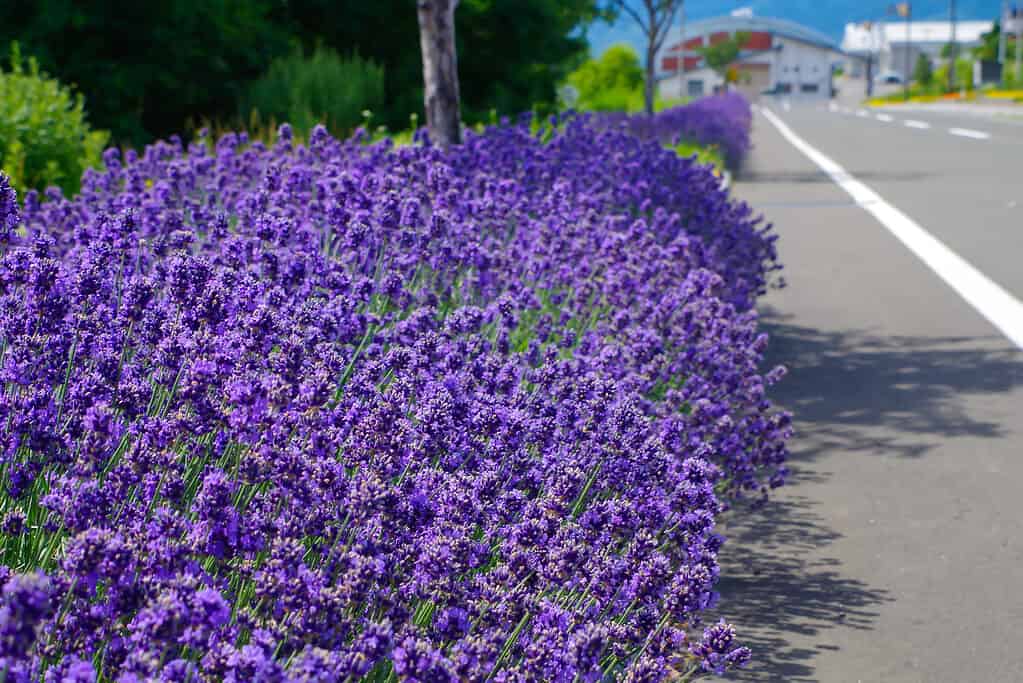
Your outdoor lavender plants may not have to be watered during the winter.
©ajisai13/Shutterstock.com
Outdoor plants likely won’t need much water, if any, during the winter. Lavender thrives in drier soil, and it’ll likely get plenty of moisture this time of year, especially since it’s dormant. However, if your lavender plant is indoors, you’ll want to make sure it gets an inch of water weekly.
How to Move Lavender Indoors
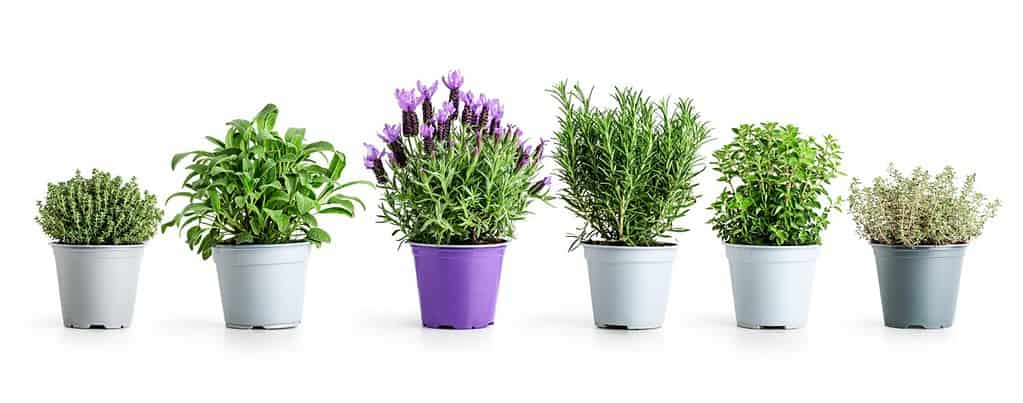
Lavender can be a great addition to your indoor container garden during the winter.
©ifiStudio/Shutterstock.com
While lavender grows best outside, you can keep them alive inside during the winter. It will add a nice aesthetic to your space and provide a calming scent. If you don’t live in Hardiness Zones 8, pay attention to the lavender species you have and consider moving it indoors.
Lavender grows well in containers, and it’s easy to move. Choose an appropriate size pot if you’re digging them out of the ground to move them inside. The lavender won’t grow well if the pot is too large, so there should only be space for about an inch of soil around the root.
If you don’t want to go through those steps each winter, keep them in pots year-round. Then, you can quickly move them outside during the summer and inside when the temperatures drop. Doing it this way allows you to spruce up your patio or deck area with beautiful, aromatic lavender plants.
Wait until the last frost is over and nighttime temperatures are regularly above 50 degrees Celsius to move them outside.
Summary of Tips for Keeping Lavender Alive in Winter
| Number | Tips for Keeping Lavender Alive in Winter |
|---|---|
| 1 | Don’t Prune or Cover It |
| 2 | Put Leaves Around the Base |
| 3 | Make Sure They Get Plenty of Light |
| 4 | Keep Lavender Plants Away from Heater Vents and Drafts |
| 5 | Give It the Right Amount of Water |
Thank you for reading! Have some feedback for us? Contact the AZ Animals editorial team.








